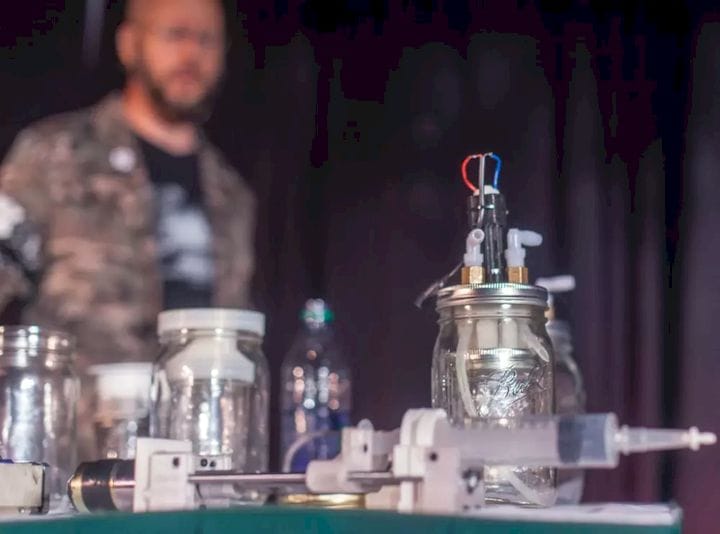
A group of self-described “anarchist biohackers” has designed a lab reactor that people can make at home out of 3D-printed pieces and off-the-shelf parts, which could potentially enable people to synthesize their own medications.
The Four Thieves Vinegar Collective was founded by mathematics professor Michael Laufer in 2015, on a platform of ensuring that people have cost-effective access to medication.
It rose to prominence in 2016, when price hikes on the EpiPen inspired the group to create plans for a homemade autoinjector cheekily named “EpiPencil.” The EpiPencil could be made for $30, and reloaded for $3, as opposed to the $600 for the brand-name version.
Ultimately, the collective’s goal is ensuring that people have the resources they need to make their own medical choices. “Pursuing science is a human right,” Laufer told Motherboard in July. “In fact, it’s the human right from which all other rights flow. You have to be able to do whatever you want to your body and to think the way you want.”
To that end, the group has developed a design for a miniature lab reactor, one that’s meant to mimic far larger and more expensive equipment. The Apothecary MicroLab, as the collective calls it, is made from off-the-shelf items and 3D-printed parts.
The reaction chamber consists of a small mason jar inside of a larger mason jar, with a special 3D-printed lid that lets materials flow between the two jars. Other 3D-printed parts include a stepper motor, syringe pump, and a coupler and shaft shredder connected with plastic hoses. The entire setup can be computer automated.
An operational MicroLab can synthesize pharmaceuticals from less-expensive chemical precursors. According to the collective, it has synthesized five different medicines so far: Naloxone (used to prevent opiate overdoses), Daraprim (treats infections in people with HIV), Cabotegravir (a preventative HIV medicine), and mifepristone and misoprostol (used to help induce pharmaceutical abortion).
The group put one of the “recipes” up on its website, but hasn’t yet put up instructions for the other four medicines; it is still doing more testing to ensure their safety.
As novel as it sounds, this isn’t the first time someone has 3D printed a chemical reactor. In January 2018, Lee Cronin and his team at the University of Glasgow came out with a study that detailed how they 3D printed a modular chemical reactor capable of performing multistep reactions.
The reactor was customizable, as the researchers developed a “library” of parts that could be put together to make the modules. The team printed the modules out of polypropylene, as it’s both 3D printable and nonreactive with organic chemical reactions. Using the modules, the team was able to manufacture baclofen, a muscle relaxant.
“The aim is to make a molecule with very little expertise just following the instruction manual,” Cronin told Chemical and Engineering News back in January. “Once you’ve digitized the process to do the synthesis, it can be resurrected forever. We wanted to come up with a way of ensuring if you put chemicals in a reactor system that they would process the same way each time, giving you a complex reaction procedure without anything going wrong.”
Read more at ENGINEERING.com











FELIXprinters has released a new bioprinter, the FELIX BIOprinter, which is quite a change for the long-time 3D printer manufacturer.